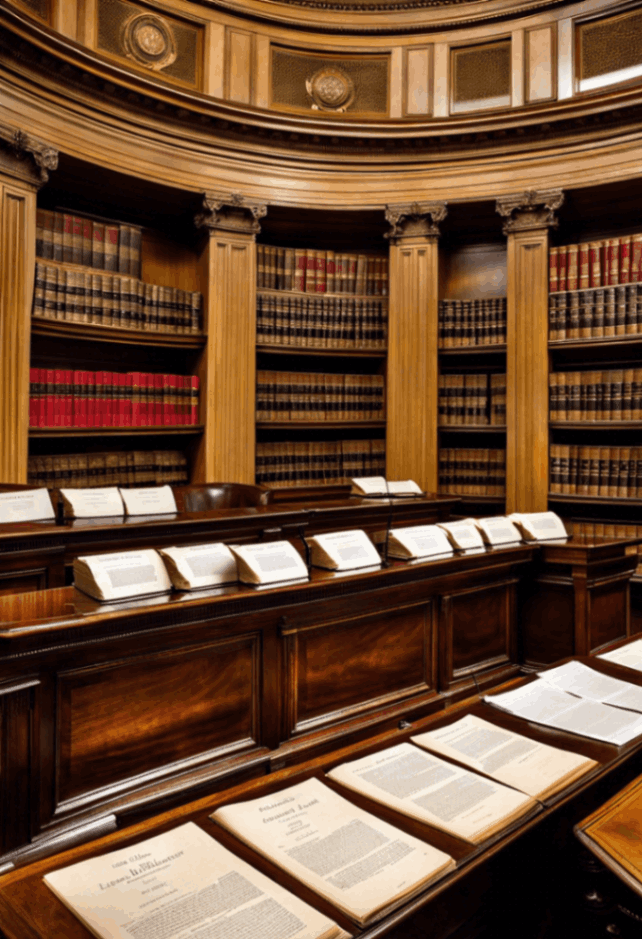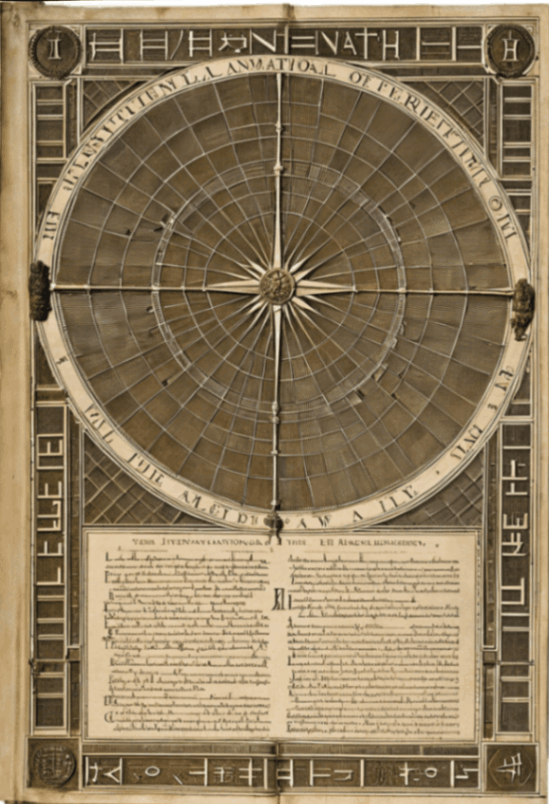

The World Trade Organization (WTO) is an essential pillar in the global trade system, and its agreements are at the heart of how international commerce is regulated. Obtain the scoop check listed here. These agreements, which have evolved over time, play a crucial role in ensuring that trade flows as smoothly and predictably as possible among member countries. Oh, where to begin?
First off, theres the General Agreement on Tariffs and Trade (GATT). Its not just about tariffs; it covers various aspects of trade in goods. Since it was first signed in 1947, GATT has been revised several times to address new challenges. The most significant revision came with the Uruguay Round in 1994 when it led to the creation of the WTO itself.
Then there's the General Agreement on Trade in Services (GATS), which extends similar principles to servicesa sector that's increasingly important in today's economy. Before GATS, there wasnt really any comprehensive international framework governing service trades. Now weve got rules covering everything from banking to telecommunications.
Don't forget about TRIPSthe Agreement on Trade-Related Aspects of Intellectual Property Rights. This ones kinda controversial 'cause it strikes a balance between protecting intellectual property rights and allowing access to essential medicines and technologies for developing nations. It's a fine line, you know?
Another key agreement is the Agreement on Agriculture (AoA). It aims at making agricultural policies more market-oriented rather than protectionist. AoA deals with issues like subsidies and import barriers that have long distorted agricultural markets.
And let's not leave out SPSSanitary and Phytosanitary Measuresand TBTTechnical Barriers to Tradeagreements! They ensure that member countries' regulations relating to food safety or product standards dont become disguised restrictions on trade.
There's also DSUthe Dispute Settlement Understandingwhich establishes procedures for resolving disputes arising under WTO agreements. Without DSU, members might be tempted to take unilateral actions when conflicts arise, leading to chaos!
But wait! For additional relevant information click on now. There's more! The Trade Facilitation Agreement (TFA) seeks to cut red tape at borders by simplifying customs procedures. It's relatively recent but already showing promise by reducing costs for businesses.
What makes these agreements so significant? Well, they provide a common set of rules that all member countries must followor else face consequences through dispute settlements mechanisms! By doing so, they create a level playing fieldor at least try their bestin an inherently unequal world.
However, it's not all sunshine and rainbows; some critics argue these agreements favor richer nations while imposing burdensome obligations on poorer ones. Yet despite its flawsand no institution's perfectthe WTO remains a cornerstone for promoting fairer global trade practices.
In essence: these key WTO agreements collectively form a regulatory framework aimed at fostering stability and fairness in global trade relationseven if achieving those goals ain't always straightforward or universally applauded.
The relationship between WTO agreements and international law principles ain't a straightforward thing. You'd think that with all the rules and regulations, they'd align perfectly, right? Well, not quite. There are some overlaps, sure, but also differences that make you scratch your head.
First off, let's talk about the basics. The World Trade Organization (WTO) was established to create a fair playing field for international trade. It's got its own set of agreements like the General Agreement on Tariffs and Trade (GATT), the General Agreement on Trade in Services (GATS), and others. These agreements aim to reduce trade barriers and promote economic cooperation among member countries.
Now, international law principles are kinda like the broader rules everyones supposed to followthings like sovereignty, non-discrimination, and human rights. Theyre more general compared to the specific details in WTO agreements.
One of the biggest connections between WTO agreements and international law is the principle of non-discrimination. Both sets of rules emphasize treating foreign goods no less favorably than domestic ones. But hey, it ain't always perfect! Sometimes countries find loopholes or interpret these rules differently.
There's also this thing called 'sovereignty,' which means each country has control over its territory and affairs. International law respects this principle a lot. But within WTO agreements, there's often tension between national sovereignty and global trade regulations. Countries dont always wanna give up their control over certain policies just for free trade benefits.
Get the scoop view that. And oh boy! Lets not forget about human rightsa fundamental part of international law principles. While WTO doesn't directly deal with human rights issues, there have been instances where trade policies conflict with them. For example, labor standards or environmental protections might get sidelined in favor of economic gains through free trade.
But don't get me wrong; it's not all doom and gloom! The Dispute Settlement Body (DSB) of the WTO tries its best to resolve conflicts by interpreting both the organization's agreements and relevant international laws fairly. Yet again thoughit aint flawless!
So yeaheven though they're interconnected in many waysthe relationship between WTO agreements and international law principles isnt without its hiccupsfar from it actually! Its an ongoing dance of compromise balancing national interests against global normsa tricky tango indeed!
In the UK, the concept of " typical law" initially created during the Middle Ages, which describes legislation created via court decisions and precedent instead of with legal laws.
The concept of legal aid, which makes certain legal representation to those that can not afford it, was first introduced in the 20th century and has actually become a essential aspect of civil liberties.
Environmental Legislation obtained prestige in the late 20th century as worldwide awareness of environmental issues grew, bring about comprehensive regulations aimed at securing the earth.
Tax obligation Regulation in the USA includes over 70,000 web pages of regulations, making it among the most intricate tax systems worldwide.
The General Agreement on Tariffs and Trade (GATT) was one of the most significant steps towards trade liberalization in history. Established in 1947, GATT aimed to reduce tariffs, quotas, and subsidies among its member countries. This agreement wasn't just about lowering barriers; it sought to create a smoother flow of goods between nations and promote economic cooperation.
GATT had its fair share of flaws though. For starters, it didn't cover services or intellectual property rights areas that have become incredibly important in today's global economy. Plus, enforcement mechanisms were pretty weak. If a country violated GATT rules, there wasnt much anyone could do about it except negotiate endlessly.
Despite its shortcomings, GATT had a huge impact on world trade. Over several rounds of negotiations including the famous Uruguay Round that lasted from 1986 to 1994 tariffs were slashed dramatically. The average tariff rate fell from around 40% at the end of World War II to less than 5% by the mid-1990s! Thats quite impressive if you think about it.
Now, lets talk about how GATT evolved into the World Trade Organization (WTO). In 1995, the WTO was established as a successor to GATT with broader powers and scope. Unlike GATT, the WTO covers not just goods but also services and intellectual property rights through various agreements like the General Agreement on Trade in Services (GATS) and the Agreement on Trade-Related Aspects of Intellectual Property Rights (TRIPS).
One can't overlook how these WTO agreements furthered trade liberalization. For instance, under GATS, countries agreed to open up their service sectors like banking and telecommunications to foreign competition. Similarly, TRIPS set down minimum standards for protecting intellectual property globally which encouraged innovation while ensuring creators got their due.
However - oh boy - not everyone is thrilled with these changes! Critics argue that while developed countries benefited immensely from these new rules because they already had strong service industries and robust IP protections in place; developing nations struggled more often than not to keep up with compliance costs without reaping substantial benefits themselves.
Moreover - let's face it - some folks believe that multilateral organizations like WTO tend towards favoring big corporations over small businesses or local economies due largely because multinational companies have greater resources at disposal influence policy-making processes within such institutions effectively tilting playing field their favor ultimately leading increased inequality both domestically internationally alike consequently eroding trust legitimacy said institutions overtime thereby undermining overall goal fostering inclusive sustainable economic growth worldwide sigh...
In conclusion: While both GATT & WTO made major strides toward liberalizing global trade undeniably paving way unprecedented levels interconnectedness prosperity many parts globe albeit unevenly distributed manner amidst criticisms concerns persist regarding fairness transparency inclusivity governance structures therein nonetheless cannot deny profound transformative impacts wielded shaping contemporary international trading system we know today exclamation mark

Sure, here's a short essay on the Examination of the Agreement on Trade-Related Aspects of Intellectual Property Rights (TRIPS) within the context of international law and WTO Agreements:
---
When we talk about international law, there ain't no way we can skip over the World Trade Organization (WTO) Agreements. Among these agreements is one that's super important but often misunderstood - the Agreement on Trade-Related Aspects of Intellectual Property Rights, or TRIPS for short.
Now, folks might think TRIPS is just another piece of legal jargon, but it's actually a big deal. It aint just about protecting brands and patents; its about balancing global trade and intellectual property rights. You see, before TRIPS came along in 1994 as part of the Uruguay Round negotiations that birthed the WTO, there wasnt much consistency in how countries handled intellectual property. Some nations had strong laws and others? Not so much.
TRIPS tries to fix all that by setting minimum standards for many forms of intellectual property regulation across all WTO member states. That means whether youre in Brazil or Belgium, there's gotta be some basic level of protection for things like patents, copyrights, trademarks and even geographical indications - think Champagne from France or Parmesan cheese from Italy.
But TRIPS isnt without its controversies. Critics argue it benefits wealthy nations more than developing ones. After all, who holds most patents? Big corporations mostly based in developed countries! Developing nations worry they can't compete if they have to follow strict IP rules which might stifle their own innovation and access to essential medicines.
Oh boy! The issue with pharmaceuticals really gets people going. Under TRIPS, patent holders get exclusive rights for up to 20 years. For life-saving drugs, this means poor countries could struggle to afford them because generics can't be made till after those two long decades are up. Thankfully though there was a bit of light at end of tunnel when Doha Declaration came into play in 2001 allowing flexibility for public health concerns.
Its also worth noting enforcement oh dear! That's another kettle of fish altogether! Ensuring compliance with TRIPS isn't easy-peasy lemon squeezy since each country has different legal systems and capacities not everyone can implement these rules effectively or uniformly.
In conclusion then: while TRIPS aims high by standardizing IP laws globally through WTO framework providing certain flexibilities here n' there especially around public health issues; critics ain't wrong pointing out inequities arising between industrialized vs developing economies due largely unequal power dynamics inherent within global trade structures themselves!
So yeah love it or loathe it ya can't deny that TRIPS plays an influential role shaping modern landscape international trade & intellectual property rights today!
---
The Dispute Settlement Understanding (DSU) mechanism of the World Trade Organization (WTO) is crucial for resolving trade disputes under international legal frameworks. Now, you might wonder why it's so important? Well, let's dive in.
First off, the DSU ain't just a bunch of rules written on paper. It's actually something that countries rely on when they feel another member's not playing fair in the global trade playground. Imagine two kids fighting over a toy the DSU is like an experienced mediator who steps in to sort things out and make sure everyone gets their turn.
You see, without this mechanism, there'd be chaos. Countries would resort to tit-for-tat measures which could escalate into full-blown trade wars. Nobody wants that! The DSU provides a structured process where grievances can be aired and addressed properly. Its like having a referee in a game; it ensures fairness and order.
When countries join the WTO, theyre not just signing up for free trade; theyre agreeing to follow certain rules. And if there's no way to enforce those rules? They dont mean much at all. That's where the DSU comes into play it holds members accountable and makes sure they're keeping their promises.
The process itself is pretty thorough too. Once a complaint is lodged, there's consultations first kinda like trying to talk things out before escalating further. If that doesnt work, then it moves onto panels and possibly even an appellate review. This multi-step approach helps ensure decisions are well-considered and fair.
However, it's not perfect by any means. Some critics say it takes too long or that powerful countries sometimes bully smaller ones despite the rulings. But hey, nothing's flawless right? At least with the DSU, there's a transparent system in place rather than leaving disputes to fester unchecked.
In conclusion, while it's got its imperfections and detractors, the Dispute Settlement Understanding (DSU) mechanism remains vital for maintaining stability and fairness in international trade relations among WTO members. Without it? We'd probably see more conflicts spiraling out of control with damaging consequences for everyone involved.
So yeah, next time you hear about some big trade dispute getting resolved through WTO processes, remember: that's likely thanks to good ol' DSU doing its job behind-the-scenes!


The World Trade Organization (WTO) agreements have had a profound impact on national legislation and policy-making processes. These agreements, which aim to reduce trade barriers and ensure fair competition, often require member countries to adjust their laws and policies accordingly. But let's not pretend it's all sunshine and roses; the influence of WTO agreements isn't without its challenges.
First off, when a country joins the WTO, it commits to adhering to a set of rules that govern international trade. These rules are designed to create a level playing field for all members but can sometimes lead to significant changes in domestic laws. For instance, if a country's agricultural subsidies are deemed unfair under WTO rules, it may have to reform its subsidy programs. This ain't always popular with local farmers who might rely on those subsidies for their livelihood.
Moreover, governments often find themselves walking a tightrope while trying to balance international obligations with domestic priorities. On one hand, they need to comply with WTO regulations; on the other hand, they can't ignore the interests of their own citizens. It's tricky business! Sometimes, this balancing act leads to heated debates within the government itself as different departments vie for their interests.
Interestingly enough though, not all changes prompted by WTO agreements are met with resistance. In some cases, these agreements can actually serve as catalysts for positive reform. Take intellectual property rights for examplemany countries have strengthened their IP laws in order to comply with TRIPS (Trade-Related Aspects of Intellectual Property Rights), leading to better protection for inventors and creators. So hey, it's not all bad news.
Howeverand here's where things get really complicatednot every nation has the same capacity or resources to implement these changes smoothly. Developing countries especially face hurdles in adapting their legislative frameworks due to limited financial and administrative capacities. It's like telling someone whos barely getting by that they need to buy an expensive new suit just because everyone else at the party is wearing one.
In conclusion thenI guess we could saythe influence of WTO agreements on national legislation and policy-making is both extensive and multifaceted. It brings about necessary reforms but also poses significant challenges that require careful navigation by governments worldwide.
The World Trade Organization (WTO) has been a cornerstone of international trade since its establishment in 1995. However, it ain't without its fair share of challenges and potential for reform. When we talk about the WTO from an international law perspective, there's a heck of a lot to consider.
First off, let's face it: the dispute settlement system is kinda broken. Many countries complain that it's too slow and cumbersome. The Appellate Body, which is supposed to be the final arbiter of disputes, has been hamstrung by stalemates over appointments. Without enough judges, it's pretty much paralyzed. Some folks argue that this undermines the whole purpose of having rules in place that everyones agreed upon.
Moreover, developing nations feel like they're getting the short end of the stick. They argue that WTO agreements are skewed in favor of developed countries. It's true; richer nations often have more resources to navigate complex trade rules and push their interests effectively. Developing countries aren't exactly thrilled about this imbalance and are calling for reforms to level the playing field.
And don't get me started on transparency! Critics say that WTO negotiations lack openness and inclusiveness. Many decisions are made behind closed doors with little input from smaller or less powerful members. If you ask me, that's no way to run an organization that's supposed to work for everyone's benefit.
Climate change is another elephant in the roomhow do we reconcile free trade with environmental protection? There's growing pressure on the WTO to adapt its agreements to support sustainable development goals. This means potentially revising existing rules or crafting new ones aimed at reducing carbon footprints and promoting green technologies.
Intellectual property rights also stir up quite a bit of controversy within WTO frameworks like TRIPS (Trade-Related Aspects of Intellectual Property Rights). On one hand, you've got companies arguing they need strong IP protections for innovation's sake; on the other hand, theres public health advocates saying these protections can make essential medicines unaffordable for poorer nations.
Then there's digital tradea relatively new frontier that's not fully addressed by current WTO agreements. How do we deal with issues like data privacy, cybersecurity, and cross-border data flows? These are questions that need answers if were gonna keep up with modern trading realities.
So whats gotta change? For starters, updating dispute resolution mechanisms would be hugemaking them faster and more accessible could restore some faith in the system. Another biggie would be ensuring that all members have equal say; democratizing decision-making processes might fix some transparency issues too.
We can't ignore climate action eitherthe WTO needs frameworks aligning global trade policies with environmental objectivesor we'll just keep running into conflicts between economic growth and sustainability goals.
In sum: while there's no denying that the WTO plays an essential role in global commerce, it ain't perfect by any stretch of imagination! Addressing these challenges through thoughtful reforms could go a long way toward making it more equitableand effectivefor everyone involved.
